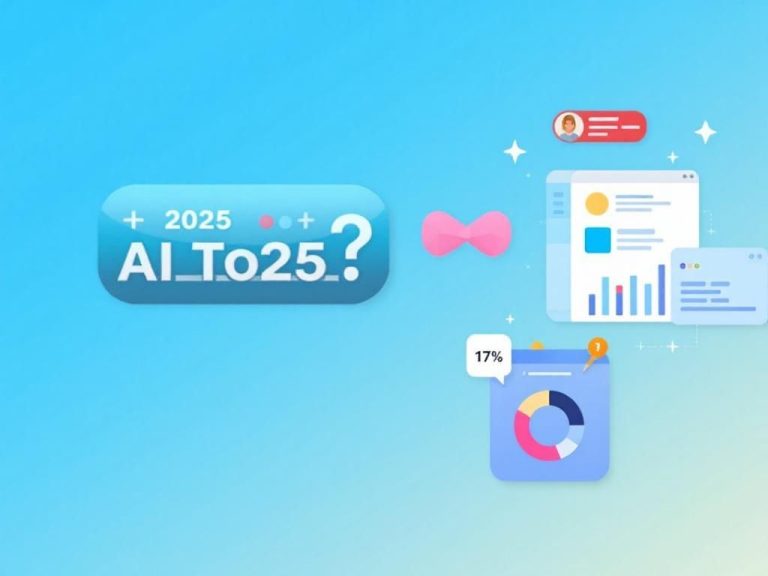As businesses increasingly rely on data-driven decision-making, understanding customer sentiment has become paramount. The rise of artificial intelligence has introduced a range of tools that can efficiently analyze and interpret the feelings, opinions, and attitudes of consumers towards products and services. This article explores the most effective AI tools for analyzing customer sentiment in 2025, focusing on their functionalities, benefits, and how they can enhance customer engagement and satisfaction.
Understanding Customer Sentiment Analysis
Customer sentiment analysis involves using natural language processing (NLP) and machine learning algorithms to interpret and quantify the sentiments expressed in customer feedback, reviews, social media comments, and other textual data. This process enables organizations to gauge customer satisfaction, identify trends, and respond proactively to customer needs.
Key Components of Sentiment Analysis
- Natural Language Processing (NLP): This technology allows machines to understand and process human language, helping to analyze text data at scale.
- Machine Learning: Algorithms learn from data patterns, enabling tools to improve over time and provide more accurate sentiment assessments.
- Data Integration: The ability to aggregate data from various sources such as social media, surveys, and emails for a comprehensive analysis.
- Visualization Tools: Graphical representations of data which help in interpreting sentiment trends effectively.
Top AI Tools for 2025
With numerous sentiment analysis tools available, selecting the right one can be challenging. Here’s a rundown of the leading tools as of 2025:
1. IBM Watson Natural Language Understanding
IBM Watson offers a robust suite of NLP tools that can analyze sentiment, emotion, and keywords in text data. Its user-friendly interface and powerful machine learning algorithms make it suitable for businesses of all sizes.
| Feature | Description |
|---|---|
| Emotion Analysis | Identifies emotions such as happiness, anger, and sadness in customer feedback. |
| Keyword Extraction | Discovers key phrases that are important in customer interactions. |
| Sentiment Classification | Categorizes sentiment as positive, negative, or neutral. |
2. MonkeyLearn
MonkeyLearn is an intuitive platform that offers no-code solutions for analyzing text data. It’s particularly popular among marketing teams looking to derive sentiment insights from social media and customer feedback.
- No-Code Interface: Users can set up sentiment analysis without technical expertise.
- Customizable Models: Businesses can train their models based on specific needs, leading to higher accuracy.
- Integration Capabilities: Seamless integration with platforms like Slack, HubSpot, and Zapier.
3. Lexalytics
Lexalytics specializes in text analytics and sentiment analysis for enterprises, providing deep insights from large volumes of data. It is particularly effective for companies with complex analytic needs.
- Real-time Analysis: Instantly process large datasets.
- Multilingual Support: Analyze customer sentiment in various languages.
- Customizable Dashboards: Visualize data in a way that suits organizational needs.
4. Google Cloud Natural Language
Google’s Cloud Natural Language API enables businesses to extract insights from text, including sentiment detection. Its integration with Google’s ecosystem makes it a convenient choice for users already leveraging other Google services.
Advantages of Google Cloud Natural Language
- Scalability: Handle analysis for large datasets effortlessly.
- Entity Recognition: Identify and categorize entities within text.
- Integrated Machine Learning: Enhance capabilities over time through Google’s advanced machine learning algorithms.
How to Choose the Right Sentiment Analysis Tool
Selecting the right sentiment analysis tool requires careful consideration of several factors:
Business Needs
Evaluate the specific needs of your business, such as:
- Volume of data to analyze
- Types of channels for feedback (social media, email, surveys)
- The need for real-time versus batch processing
Ease of Use
Consider tools that offer an intuitive interface and require minimal training. No-code options can significantly reduce the learning curve.
Integration Capabilities
Ensure that the tool can easily integrate with your existing software and platforms to streamline your data workflows.
Cost
Analyze the pricing structure to find a tool that offers value for money while meeting your needs. Many tools offer tiered pricing based on usage.
Best Practices for Implementing Sentiment Analysis
To maximize the benefits of sentiment analysis, consider the following best practices:
- Define Clear Objectives: Outline what you want to achieve with sentiment analysis, such as improving customer service or product development.
- Regularly Update Models: Continuously fine-tune and update your sentiment models based on new data and feedback.
- Combine Qualitative and Quantitative Data: Use sentiment analysis alongside other data sources for a more comprehensive view of customer opinions.
Conclusion
As we move towards 2025, the significance of understanding customer sentiment will only grow. Leveraging the right AI tools for sentiment analysis can provide businesses with a competitive edge, driving customer satisfaction and loyalty. By choosing the appropriate tool and implementing best practices, organizations can convert sentiment data into actionable insights, paving the way for informed decision-making in the dynamic marketplace.
FAQ
What are the top AI tools for analyzing customer sentiment in 2025?
In 2025, some of the top AI tools for analyzing customer sentiment include IBM Watson, Google Cloud Natural Language, Sentiment Analyzer, and Brandwatch.
How do AI tools improve customer sentiment analysis?
AI tools enhance customer sentiment analysis by using machine learning algorithms to interpret text data, identify emotions, and provide actionable insights based on customer feedback.
What industries benefit most from customer sentiment analysis tools?
Industries such as retail, hospitality, finance, and technology benefit significantly from customer sentiment analysis tools, as they help in understanding customer preferences and improving service quality.
Can AI sentiment analysis tools analyze social media data?
Yes, many AI sentiment analysis tools are designed to analyze social media data, allowing businesses to gauge public sentiment and react accordingly.
What features should I look for in an AI sentiment analysis tool?
When choosing an AI sentiment analysis tool, look for features such as real-time data processing, multilingual support, sentiment scoring, and integration capabilities with existing CRM systems.


